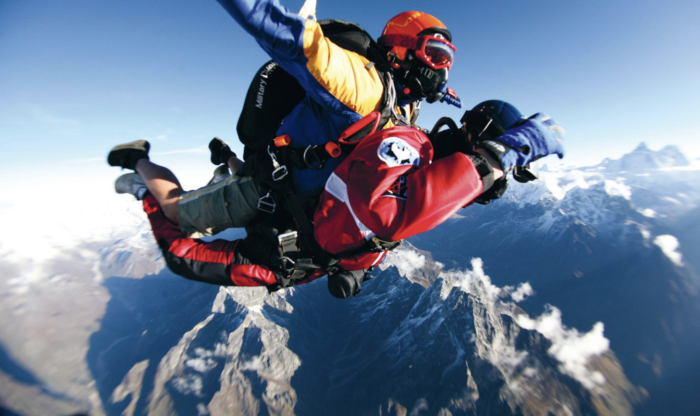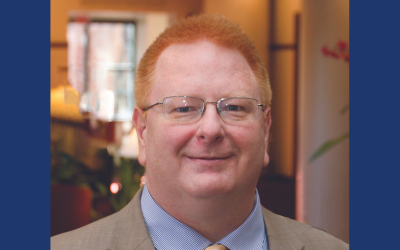Extraordinary life experiences can shape financial decisions.
I’ve always worked in finance, and I’ve always been an adventurer. I have trekked the Inca Trail to Machu Picchu, spent time living with an Indian family in the Amazon rainforest, dived with sharks in Fiji, ridden across the USA and back on a Harley Davidson. I don’t go on adventures as some sort of compensation for my boring life as an investment banker; on the contrary, I find the world of finance every bit as thrilling as my more obviously adventurous escapades. People tend to think finance is all about numbers. To a degree, of course, it is. But finance is also about risk and about very personal, human decisions.
Two of my more extreme adventures taught me a lot about risk, and they have influenced every decision I have taken ever since.
The point of no return
On 4 October 2007, I launched Wimmer Financial, a boutique investment bank specializing in natural resources, real estate, industrials and other areas. After completing a master’s degree at Harvard in 1998, I had worked for Goldman Sachs and then for Collins Stewart and Man Group/Man Securities. I had been asked by a mutual friend if I could help an Australian mining entrepreneur who was in London looking to finance a mining project. I came back with full funding within three days. My new acquaintance invited me to visit him in Australia, where I met a lot of people in the mining business. I became something of a ‘rainmaker’ for a number of other deals. I had excellent institutional investor relationships in place, and I built up a small portfolio of clients.
I chose the launch date of 4 October because I am a bit of a space fanatic: in 2007, it was the 50th anniversary of the launch of Sputnik, the world’s first artificial satellite. At first, we did well. But in September 2008, Lehman Brothers collapsed and the Great Recession began. It looked like I
had chosen the wrong time to launch an investment bank.
I was scheduled to take part in a record-breaking skydive over Mount Everest a few weeks later. I decided there was nothing to lose in being away from the office for a couple of weeks.
As we took off from the improvised airstrip high in the foothills of Mount Everest, I looked at the surrounding mountains in awe. We ascended to 29,500 feet, higher than Everest itself, and I experienced a moment of real fear. The timing of the jump, the free-fall calculations and wind speed must all be exactly right. What would happen if we landed on the side of one of these huge mountains? Would we be able to make our way back to the drop zone over this formidable terrain? Could we be rescued?
I realized that it was too late to think about these things. We were long past the point of no return. There was nothing to do but focus on doing exactly what I had been trained to do. Our record-breaking jump was successful, and we landed safely back at the airstrip.
Since then, if I am in doubt about following through with a decision I have made, I think back to that point of no return. When taking any decision, weigh the pros and cons and mitigate the risks. Once the decision has been taken, focus only on execution. There is no turning back.
At Wimmer Financial, I cut back on costs as much as I could and we soldiered on. I had many sleepless nights. It required complete focus and careful thinking; mistakes could be very costly. We weathered the storm and stayed in business until the recovery.
Taking calculated risks
In 2009, I was involved in an attempt on the world land speed record. Our car was an old Lockheed F-104 Starfighter jet that had been converted by a team of enthusiasts. It was called the North American Eagle. On a test drive in Nevada’s Black Rock Desert, with me at the wheel, the car hit a patch of soft ground and launched briefly into the air – something it seemed disconcertingly keen to do. The speed on that test run had been ‘only’ something over 200mph. The car was damaged slightly; I was fine.
I am comfortable with levels of risk I estimate to be in lower single digits. When risk gets into double digits, I am less comfortable. Driving the North American Eagle at higher and higher speeds in the attempt to exceed the existing land speed record of 763mph would have been increasingly risky. I drifted away from the project.
The team enlisted Jessi Combs, a professional racer who had broken the women’s four-wheel land speed record in 2013 (399 mph) and 2016 (478 mph). In August 2019, Combs and the team made a new attempt at the record in Oregon’s Alvord desert. One of the Eagle’s front wheels failed and it crashed. Tragically, Combs did not survive. She was posthumously awarded the new female land speed record, having reached 523mph.
Nothing exceptional is possible without taking risks: the key is to decide what level of risk you are comfortable with, then commit fully, or pull out. I am set to journey into space as a private astronaut with Virgin Galactic (having bought a ticket shortly after its launch in 2004). I consider this to carry about the same level of risk as that facing airplane passengers in the 1920s. The level of risk involved in our Everest skydive was almost certainly higher; the level of risk involved in reaching over 763mph in a four-wheel vehicle is of a different order again.
In finance, I use these real-life examples as markers for the level of risk I am comfortable with. Once I am committed, I focus 100% on making things work. If it is too risky, I walk away and have no regrets. Someone else may take that risk and get rich or famous; good luck to them. The next person may not be so lucky.




